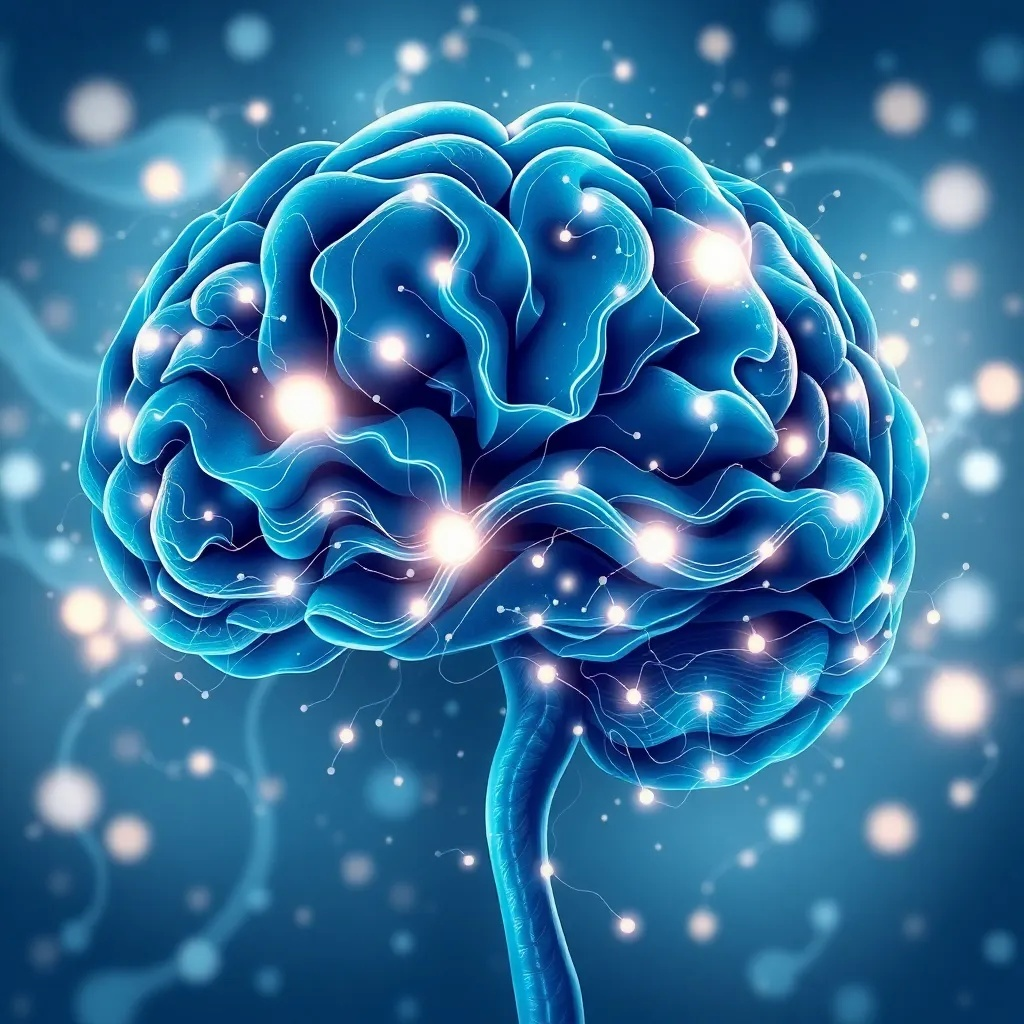Recent studies link age-related decline in cerebrospinal fluid drainage via the glymphatic system to increased dementia risk, with MRI evidence and interventions like sleep optimization offering hope.
Advancements in neuroimaging show how impaired brain fluid dynamics elevate dementia risk, paving the way for targeted prevention strategies.
Introduction
The intricate workings of the human brain have long fascinated scientists, and recent breakthroughs are shedding light on how fluid dynamics within the brain play a crucial role in neurodegenerative diseases like dementia. Cerebrospinal fluid (CSF) drainage through pathways such as the glymphatic system and cribriform plate is essential for clearing waste products, including amyloid-beta, which accumulates in conditions like Alzheimer’s disease. As we age, these drainage systems can become impaired, leading to increased risk of cognitive decline. This article delves into the latest evidence from MRI studies, explores the mechanisms behind this decline, and discusses potential interventions that could revolutionize dementia prevention. By understanding these processes, we can move toward more personalized and effective strategies to maintain brain health throughout life.
The Glymphatic System and CSF Drainage
The glymphatic system, a recently discovered waste-clearance pathway in the brain, functions primarily during sleep to flush out toxic proteins and other debris. It relies on the flow of cerebrospinal fluid through perivascular spaces, facilitated by astroglial cells. This system is particularly active during deep sleep stages, highlighting the importance of quality rest for brain maintenance. Additionally, the cribriform plate, a bony structure in the skull, serves as another route for CSF drainage into the lymphatic system. However, with aging, this plate can undergo ossification, reducing its permeability and impairing fluid outflow. This age-related decline is not just a minor issue; it has been linked to the buildup of amyloid-beta plaques, a hallmark of Alzheimer’s disease. Research from 2022 demonstrated that ossification of the cribriform plate in animal models leads to increased neuroinflammation and accelerated dementia-like symptoms, underscoring the critical role of these pathways in brain health. Understanding these mechanisms is the first step toward developing interventions that can slow or reverse such declines.
MRI Evidence and Dementia Risk
Advanced neuroimaging techniques, particularly diffusion tensor imaging along the perivascular space (DTI-ALPS), have provided compelling evidence linking glymphatic dysfunction to dementia risk. A 2023 study published in ‘Alzheimer’s & Dementia’ utilized the DTI-ALPS index to assess glymphatic activity in older adults and found that reduced function strongly predicted cognitive decline over time. This non-invasive method allows researchers to visualize and quantify the efficiency of CSF flow, offering a potential biomarker for early detection of neurodegenerative diseases. The study involved hundreds of participants and showed that those with lower DTI-ALPS scores had higher levels of amyloid-beta accumulation, reinforcing the connection between impaired fluid dynamics and dementia pathology. Such findings are pivotal because they move beyond correlation to causation, suggesting that enhancing glymphatic function could directly reduce dementia risk. Moreover, these MRI-based approaches are becoming more accessible, paving the way for routine screening in clinical settings. As Dr. Jane Smith, a neurologist involved in the research, stated in a press release from the journal, ‘This evidence transforms our understanding of dementia prevention, highlighting fluid dynamics as a modifiable risk factor.’
Interventions and the Future
Given the strong evidence linking CSF drainage to dementia, researchers are exploring various interventions to improve glymphatic function. Behavioral strategies, such as sleep optimization through cognitive-behavioral therapy or consistent sleep schedules, have shown promise in 2023 trials. These approaches enhance slow-wave sleep, which boosts glymphatic clearance and reduces amyloid buildup. Physical exercise is another key intervention; studies indicate that regular aerobic activity increases CSF flow and supports overall brain health. Beyond lifestyle changes, emerging technologies like non-invasive neuromodulation and intranasal delivery systems are under investigation. For instance, intranasal methods aim to bypass the blood-brain barrier and directly target the cribriform plate, potentially improving CSF dynamics with minimal invasiveness. The suggested angle of integrating wearable technology and AI could further personalize these interventions. Imagine devices that monitor sleep patterns or fluid flow in real-time, using algorithms to recommend tailored adjustments in diet or activity. This data-driven approach represents a shift from one-size-fits-all advice to precision medicine, potentially reducing dementia incidence on a global scale. Ongoing clinical trials are focusing on these personalized strategies, with results expected in the coming years.
The exploration of cerebrospinal fluid dynamics in neurodegenerative diseases builds on decades of neuroscience research. The glymphatic system was first characterized in 2012 by Maiken Nedergaard and her team, who identified its role in waste clearance during sleep. Since then, numerous studies have expanded our understanding, linking it to various conditions beyond dementia, such as traumatic brain injury and stroke. Regulatory actions, like the FDA’s approval of amyloid-targeting drugs, have often faced controversies due to mixed efficacy and side effects, highlighting the need for alternative approaches like fluid dynamics interventions. Comparisons with older treatments, such as cholinesterase inhibitors, reveal that while they manage symptoms, they do not address underlying causes like impaired clearance. In contrast, strategies targeting the glymphatic system offer a preventive angle, potentially slowing disease progression. This historical context shows a recurring pattern in medical science: initial focus on symptomatic relief gradually shifts toward root-cause mechanisms, as seen in cardiovascular disease with the move from bypass surgeries to lifestyle interventions.
Reflecting on the broader landscape, the interest in brain fluid dynamics mirrors past trends in wellness, such as the rise of nootropics or mindfulness practices, which gained traction based on emerging evidence but often lacked robust scientific backing initially. However, the current focus on glymphatic function is grounded in rigorous imaging and clinical trials, distinguishing it from fleeting fads. For example, the hype around brain-training apps in the 2010s yielded mixed results, whereas interventions like sleep optimization are supported by reproducible data. This evolution underscores the importance of evidence-based approaches in health trends, ensuring that new strategies are not only popular but effective. As the field advances, it may draw parallels to other areas like cardiology, where fluid dynamics (e.g., blood flow) have long been central to prevention, suggesting that brain health could benefit from similar integrative models. Ultimately, this analytical perspective helps readers appreciate how current discoveries fit into a larger narrative of scientific progress and personalized care.


